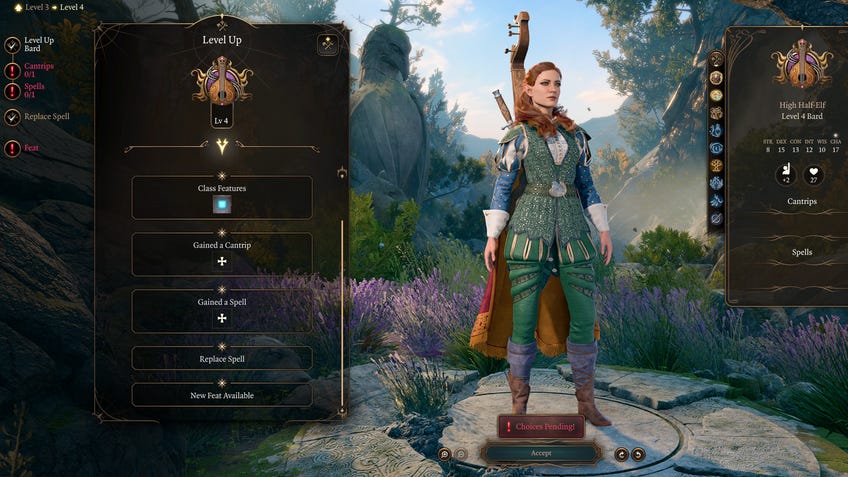6 D&D references in Baldur’s Gate 3 that you might not know about
D&Did you know?
Baldur’s Gate 3 features a ton of Dungeons & Dragons references. The D&D-adjacent video game shares the same world as D&D – the Forgotten Realms – and many of the same gameplay mechanics, so there are a lot of worldbuilding aspects taken directly from the tabletop RPG.
Baldur’s Gate 3 is a fantastic way to experience D&D worldbuilding thanks to its show-don’t-tell approach and flashy presentation. However, for players who aren’t familiar with Dungeons & Dragons lore, there are undoubtedly many things referenced throughout the video game that they won’t know much about – beyond what the game is willing to tell you.
For those players who are curious to learn more about the world of D&D, we’ve selected six Dungeons & Dragons things referenced in act one of Baldur’s Gate 3 to provide additional information about. From ancient magical empires to beholder cousins, here are six D&D references found in Baldur’s Gate 3 that you might not know about.
May contain minor spoilers for act one of Baldur's Gate 3.
1. Gnolls and Yeenoghu
These ferocious creatures have some terrifying origins
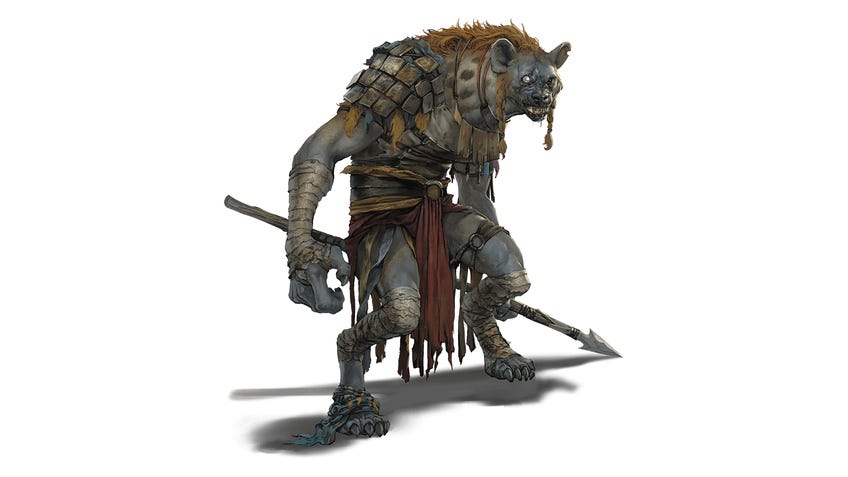
On the other side of the bridge to the Blighted Village players can run into a pack of hyenas. Depending on when players arrive at this point on the map, the hyenas may be still alive. If they are, then the players may realise that the bloated hyenas are in the process of turning into gnolls – hyena/human hybrids who are notoriously violent and bloodthirsty. Players are also likely to run into at least one gnoll during their adventures across the wilderness of the Sword Coast.
Gnolls are an iconic Dungeons & Dragons monster, largely thanks to the fact that they’re relatively low-level enemies and so have been featured in many a D&D campaign. Though gnolls are often born through reproduction, others are created through the process of a hyena eating the flesh of a victim killed by a gnoll possessed by a demonic spirit. This complicated ritual is the work of Yeenoghu, one of the demon lords of Avernus – the first layer of the Nine Hells – a gigantic hyena god who’s only passionate about one thing: mass destruction.
This process is one of several rituals that gnoll worshippers of Yeenoghu perform, with others being even more grotesque and terrible still. Whilst some gnolls claim Yeenoghu as their original creator, others reject this belief and choose to worship other creatures – such as fey spirits – or embrace a live of atheism, which might be a better option considering that Yeenoghu is one mean demon lord.
2. Spectators and beholders
There’s an entire family-tree of flying many-eyed magic masters
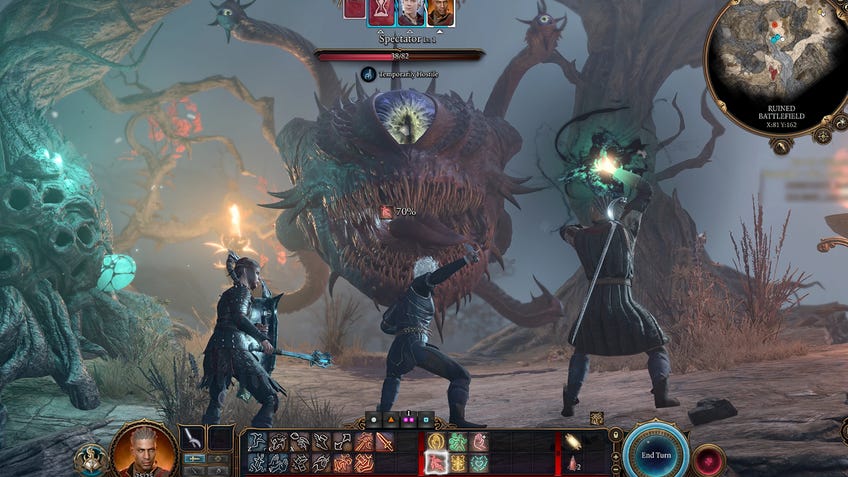
During the Missing Shipment quest located near Waukeen’s Rest and The Risen Road, players may decide to either kill the Zhentarim survivors or fail to keep them alive during their fight with the gang of gnolls. Should either of these things happen, they’ll be able to crack the lock on the heavy chest the now-dead survivors were carrying and discover it holds a strange container.
If players choose to open the container, then they’ll be greeted with an aggressive spectator – an aberration that’s a cousin to the iconic monster, the beholder. Whilst most people are familiar with the 11-eyed beholders – with the creature appearing in multiple D&D movies – spectators are a lesser version of the beholder, having only five eyes, being smaller and much less powerful. Nevertheless, spectators are still incredibly dangerous creatures with a deep jealousy towards treasure, which is what they’re often summoned to guard.
Spectators are one of several variants on beholders, many of which are born from the dreams of a beholder. Other beholder-kin include the death kiss – a beholder-kin that is the result of a beholder having a nightmare about blood – and gazers, which born when a beholder dreams about poison.
3. The Blood War
A never-ending conflict that has claimed many lives
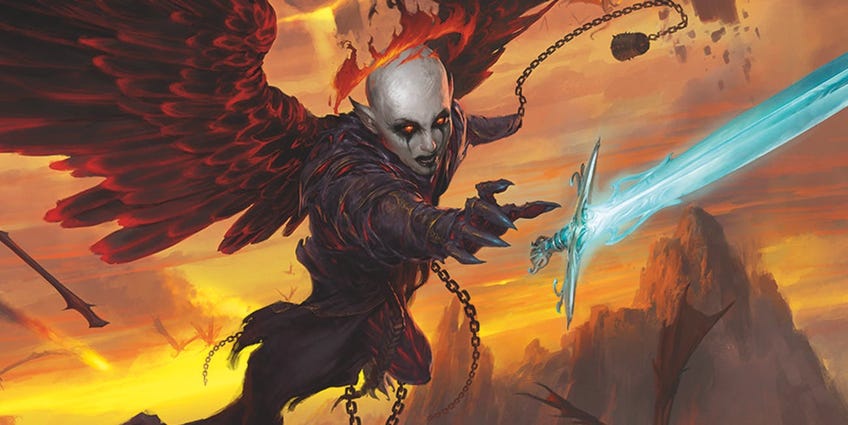
One of the main companions of Baldur’s Gate 3 that can join your adventuring party is Karlach. A tiefling who somehow found herself in the Nine Hells, Karlach used to be a soldier for the Archduchess of Avernus, Zariel. The Archduchess was once one of the angels of the Seven Heavens, before she became an archdevil and swore to put an end to an ancient conflict known as The Blood War.
The Blood War is a battle that has raged between the devils of the Nine Hells and the demons of the Abyss, with no clear reasons as to why it began in the first place. Though both planes are occupied by evil creatures, the two clash on the grounds of how things should be run in the afterlife for mortals with poor morals – which may have been grounds enough to spark the conflict.
Either way, The Blood War has raged for literal millennia, turning the two planes of the Forgotten Realms into a battleground that has swept up not just countless devils and demons but, as Karlach proves, numerous other people as well. Those souls unfortunate enough to find themselves on either plane are likely to become pawns in a seemingly unending war that has seen both sides gain and lose ground.
4.The Maiden of Pain and Planescape
The Forgotten Realms is filled to the brim with weird gods
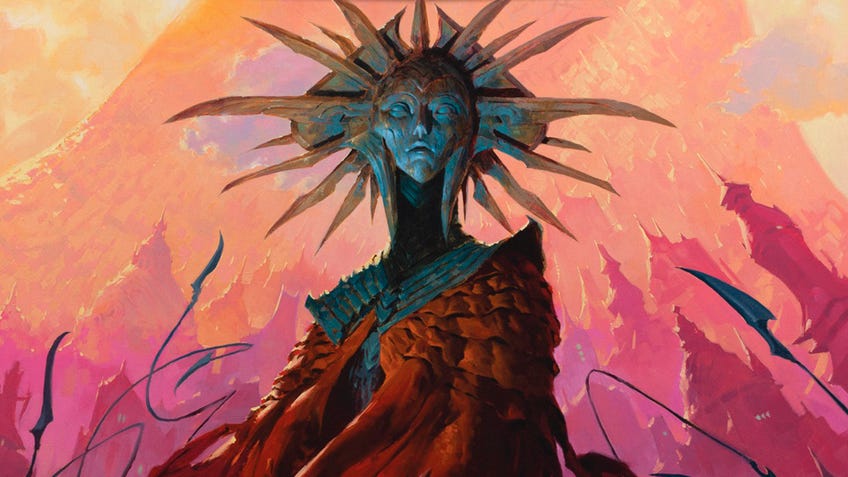
Both the Abyss and the Nine Hells are part of Dungeons & Dragons’ own system of afterlife known as Planescape. Designed to provide a place of rest or torment for mortal souls, Planescape is a collection of worlds, each governed by one of the moral alignments. For example, whilst the Abyss is a place of torment for those who lived their lives in accordance with chaotic evil, the Nine Hells is an afterlife for people who favour lawful evil.
Every one of the afterlife planes is sat within an enormous wheel, each one sitting across from its moral opposite. In the centre of this wheel is the city of Sigil, which serves as a sort of purgatory for mortal souls and possibly the strangest metropolis in existence – with various members of each plane mixing within its streets. The leader of Sigil is an entity known as The Lady of Pain, who has no allegiance to any of the afterlife planes and serves to maintain the balance of Planescape.
Baldur’s Gate 3 players who have encountered Abdirak in the Shattered Sanctum would have heard the torturer speaking about The Maiden of Pain, with an opportunity to undergo a ritual to gain the blessing of Loviatar. Though similar in name to The Lady of Pain, The Maiden of Pain is an entirely separate entity, serving as a servant and queen to Bane, the god of tyranny and a major character throughout the Baldur’s Gate series. Whilst The Lady of Pain operates as a neutral leader of Planescape’s central city, The Maiden of Pain is more of a god in a classic sense – serving her own desires first-and-foremost. Either way, both entities are incredibly powerful and dangerous in their own right and show the impressive breath of deities within the Forgotten Realms.
5. Volothamp Geddarm
This enigmatic wizard has one heck of a story to tell
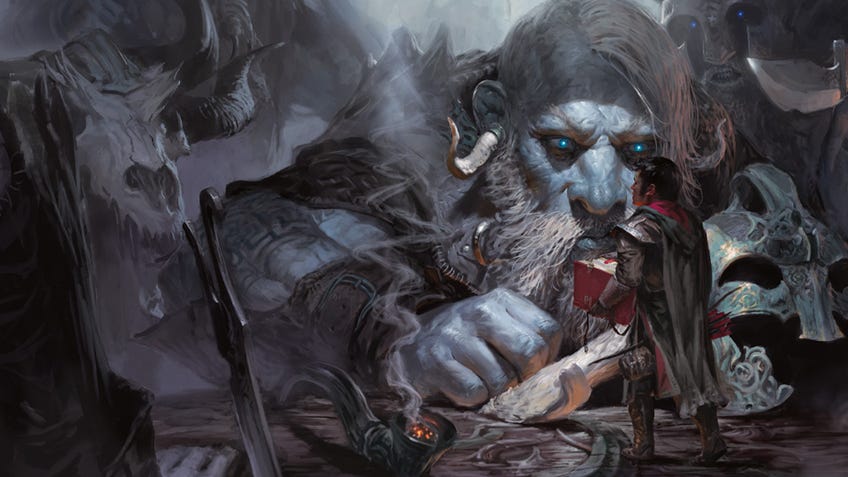
If players have rescued Volo from the Shattered Sanctum, the foppish journalist will join their camp as someone they can trade and talk with throughout the game. The Volo in Baldur’s Gate 3 is also the Volothamp Geddarm whose namesake has lent itself to multiple Dungeons & Dragons sourcebooks, including Volo’s Guide to Monsters for D&D 5E and many books released for previous editions, such as Volo’s Guide to Waterdeep and Volo’s Guide to the Sword Coast.
Volo is the canonical author of these books both in the world of Dungeons & Dragons and in the real world – despite there obviously being actual credited authors behind the books. The writer has lived an incredible life, travelling across Faerun and documenting his findings on the various places he visited.
Along the way, the wizard has gotten into all sorts of hijinks - from exposing a scheme to lure people into a cavern of doppelgangers to being framed for the theft of a powerful artifact by an ambitious thief. Volo’s tendency towards foolhardy decision-making and intense big-headedness has resulted in the scholar finding himself in a number of dangerous situations, with his undeniable charm and exceptional good luck often getting him out of trouble.
Besides Baldur’s Gate 3, Volo has made appearances in the likes of classic D&D adventures such as Tomb of Annihilation and Waterdeep: Dungeon of the Mad Mage, as well as the video game Neverwinter Nights 2: Storm of Zehir, and was even referenced in this year’s movie Dungeons & Dragons: Honor Among Thieves.
6. Netheril
A classic tale of hubris and the lack of it

The ancient human empire of Netheril is referenced by the wizard Gale – who mentions it when discussing the history of the goddess of magic, Mystra. Netheril was a powerful magical empire that was once spread across multiple realms. After humans were introduced to magic via elves, they used their abilities to harness to weave to create incredible things, including cities that could fly.
Before the empire fell, it was governed by a council of mages who were considered to be the most powerful magic wielders in Netheril. Many of the most wealthy and accomplished magic-users resided within the 54 cities that floated above Faerun, with the less powerful mages and non-magic users forced to live within low Netheril and often treated very poorly by the empire’s rulers.
Eventually, Netheril became a classic example of hubris and the dreadful consequences of mortals overstepping their bounds. Despite the empire lasting thousands of years, it was brought down by Netheril’s arcanists attempting to take control of magic itself. The mages’ arrogance led to the Weave, which is a primary source of magic in Faerun, being destroyed and the flying cities of Netheril crashing to the ground. The destruction of low Netheril’s people was much slower but no less terrible, with many innocents being controlled and/or consumed by grotesque spell-casting aberrations called Phaerimm.
